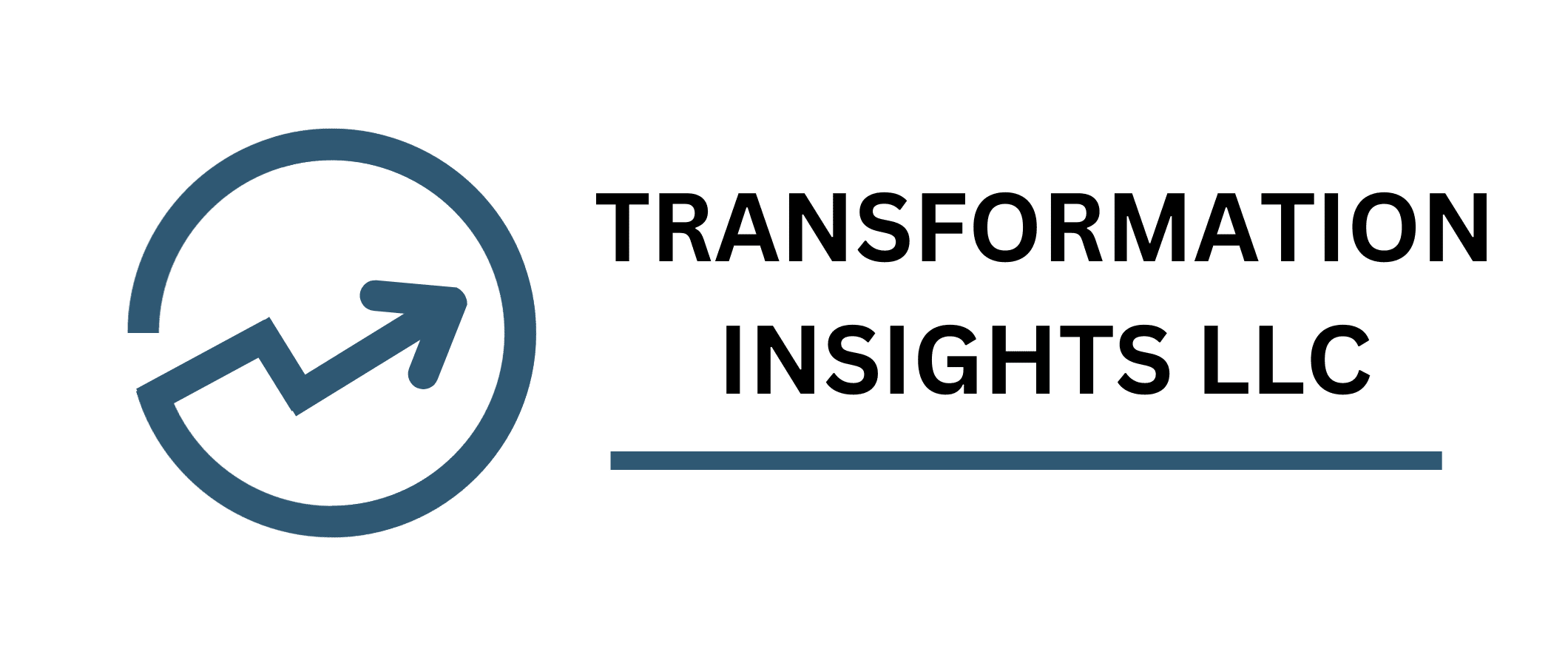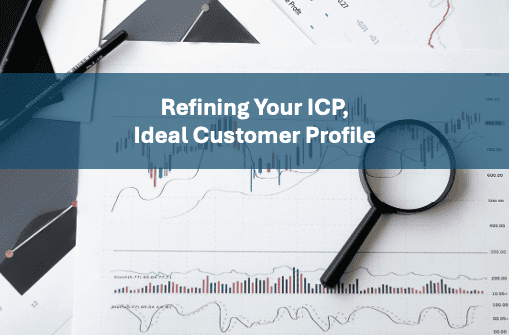In GTM strategy, it doesn’t get any more critical than identifying your ideal customer profile (ICP). Clear identification is essential to creating strategies that resonate with the right companies. Too often, businesses fall into the trap of casting a wide net, attracting a diverse array of potential customers. However, this can lead to splintered offerings, stretched resources, diluted messaging, and an overall inefficient sales funnel.
As a Marketing Strategist, I’ve worked with companies to sharpen their ICP, resulting in more targeted campaigns, shorter sales cycles, and better alignment with core customers. By refining your ICP, you can focus on the most promising markets that align with your product or service, maximizing your return on investment (ROI).
Let’s dive into how you can define your ideal customer profile and effectively narrow your market for greater impact.
What is an Ideal Customer Profile (ICP) in B2B?
An ICP in a B2B context is a specific description of the type of company that would benefit most from your product or service and provide the greatest value in return. Unlike a buyer persona, which focuses on individual decision-makers, an ICP zeroes in on firmographics—industry, company size, revenue, and location—to define the characteristics of your target market.
To have a more specific direction, you can refine an ICP beyond just firmographics by focusing in on specific problems your solution addresses. Instead of broadly targeting mid-sized tech companies, you could prioritize those facing challenges with inefficient product launches. Similarly, rather than aiming at healthcare organizations in general, you could serve hospitals with challenges with patient data management. In manufacturing, you could refine your ICP for manufacturers facing supply chain visibility issues. By homing in on these precise pain points, you ensure your offering is directly relevant and valuable to the market you’re targeting.
The more clearly you define your ICP, the easier it becomes to tailor your messaging, prioritize leads, and align your sales and marketing efforts. An effective ICP helps you identify the companies most likely to convert into high-value, long-term customers.
One of the frameworks I’ve found particularly valuable for defining an ICP is by GTM Partners, an organization I am proud to be certified with as a GTM Ambassador on the modernized GTM OS. As they highlight, nailing your ICP is one of the most critical steps to success, especially to ensure all teams are in alignment so the GTM efforts can be most effective.
Why Do Businesses Struggle with Narrowing Their ICP?
It’s common for B2B companies to struggle with narrowing down their ICP. There’s often a fear that focusing too narrowly will limit potential opportunities, but in reality, trying to appeal to too broad a market can dilute your message and stretch your resources thin. Some common challenges include:
- Fear of Missing Out (FOMO): many businesses hesitate to focus on a specific market because they fear missing potential customers who fall outside the defined profile. However, this can lead to chasing unqualified leads that never materialize into business.
- Undefined Product-Market Fit: companies that are still refining their offerings may struggle to identify where their product or service adds the most value, leading to an overly broad ICP.
- Lack of Data: without a solid understanding of who your best customers are, it’s difficult to build an ICP. Companies often rely on assumptions rather than data when defining their target market, which leads to ineffective targeting.
- Changing Markets: industries are more dynamic than ever; what worked yesterday may not work today. As markets evolve, so must your ICP.
Steps to Refine Your ICP in B2B
Refining your ICP requires a blend of data analysis, strategic thinking, and a clear understanding of your product-market fit. Here are the steps to get started:
1. Review Your Actual ICP Today Based on Data
The first step in refining your ICP is to examine your current customer base. Identify the companies that have had the most success with your product or service. These are typically the ones that generate the most revenue, have long-term engagements, and align well with your business goals and core offerings.
Start by asking:
- What industries do they operate in?
- What is their company size (in terms of revenue, number of employees, or market share)?
- What challenges were they facing when they came to you, and how did your solution help them?
By identifying the common traits of your best customers, you can build a clearer picture of your actual ICP. This analysis should be driven by data, using CRM tools, customer interviews, and performance metrics to get the most accurate insights.

2. Take a Look at Market Fit
Once you’ve gathered data on your best customers, it’s time to assess your overall market fit. In B2B, this means looking at which industries or sectors are the most likely to benefit from your offering. Consider factors like:
- Industry trends and challenges that align with your solution.
- The maturity of the companies in your target market. Are you better suited to serve startups or established enterprises?
- The decision-making processes in these companies and the complexity of their buying cycles.
Understanding where your solution fits into the broader market will help you target companies that not only need your product but also have the capacity to adopt and benefit from it.
3. Segment by Demographic and Firmographic Data
Demographic and firmographic segmentation is crucial to narrowing your ICP. Key firmographic factors to consider include:
- Industry: are you in one or multiple industries? If multiple, identify the common factors such as challenges or pain points.
- Company Size: Depending on the size of the company, their needs—and the complexity of their problems—will vary. Tailor your ICP to the businesses that have the resources and scale to benefit from your offering.
- Revenue: Does your product or service align more with companies in a certain revenue range? For example, SaaS solutions often target companies in a specific revenue bracket where the return on investment is clear.
- Geographic Location: Are there certain regions or countries where your product performs better due to regulatory environments, industry presence, or market saturation?
By using firmographic data, you can better understand which segments of the market are most likely to engage with your product and become long-term customers.
4. Leverage Technology to Sharpen Your ICP
Technology plays a critical role in refining your ICP, especially in B2B. AI and machine learning tools can help you analyze large datasets to uncover patterns and trends that may not be immediately visible. By leveraging these technologies, you can continually refine your ICP as new data enters and market conditions change.
For example, customer relationship management (CRM) tools can provide detailed insights into your current customer base, helping you identify the characteristics of your most profitable clients. Meanwhile, AI-powered analytics platforms can track real-time market shifts, giving you the agility to adjust your ICP as needed.
Using Your ICP in GTM Motions
Once you’ve refined your ICP, the next step is to align it with your marketing and sales efforts. This ensures that you’re not only targeting the right companies but also engaging them with the right message.
1. Personalize Outreach and Campaigns
With a well-defined ICP, you can tailor your marketing campaigns to resonate with your ideal customers. This might involve creating personalized content that addresses specific industry pain points or crafting case studies that highlight your success with similar companies. The more personalized and relevant your outreach, the more likely you are to engage decision-makers.
2. Align Sales and Marketing Efforts
A refined ICP allows for better alignment between sales and marketing teams. Marketing can generate higher-quality leads, while sales can prioritize prospects that are more likely to convert. This alignment results in a more efficient funnel, shorter sales cycles, and a higher win rate.
3. Measure Success with KPIs
As you refine your ICP, it’s important to measure the success of your targeting efforts through the metrics you define. A few example Key Performance Indicators (KPIs) include engagement, conversion rates at each stage, customer acquisition cost (CAC), and customer lifetime value (CLV). I recommend to have a mix of leading indicators top of funnel with specific metrics to measure what is working throughout the buyer’s journey.
Summary
Refining your ideal customer profile is essential for B2B companies looking to achieve greater efficiency and effectiveness in their marketing and sales efforts. By analyzing your current customers, leveraging firmographic data, and using technology to stay agile, you can narrow down your market to the companies most likely to drive growth.
With a well-defined ICP, you’ll be able to create more personalized messages, improve lead quality, and ultimately build stronger, more profitable relationships with your customers.
Are you looking for help to improve your GTM approach and get more from your investments? Let’s connect.

